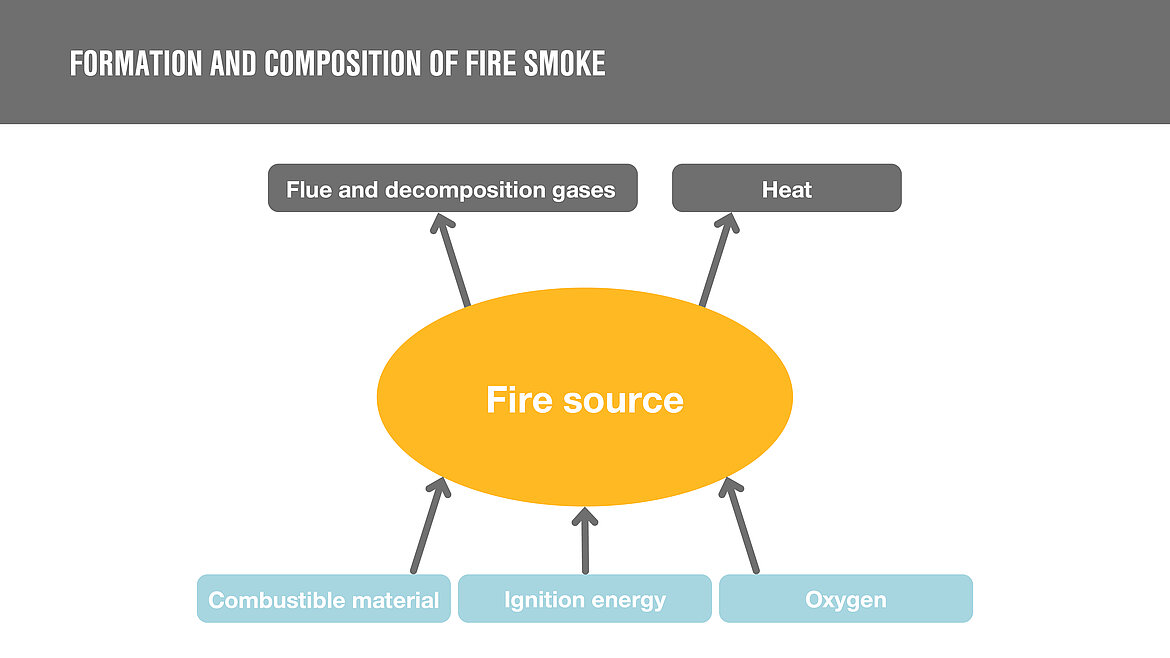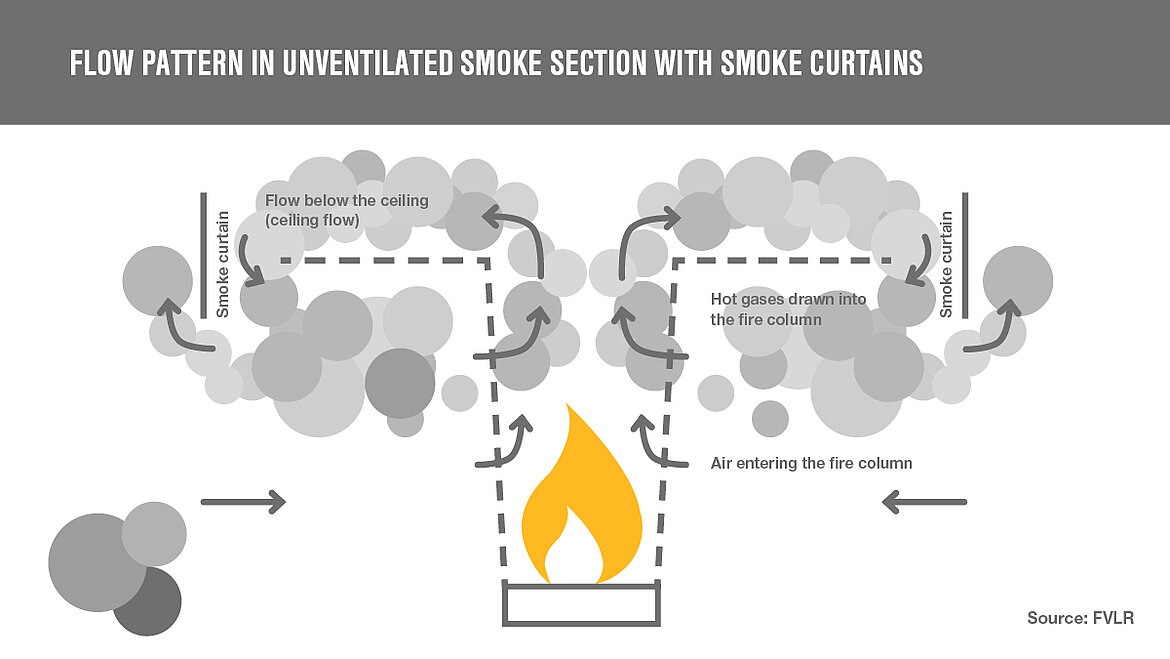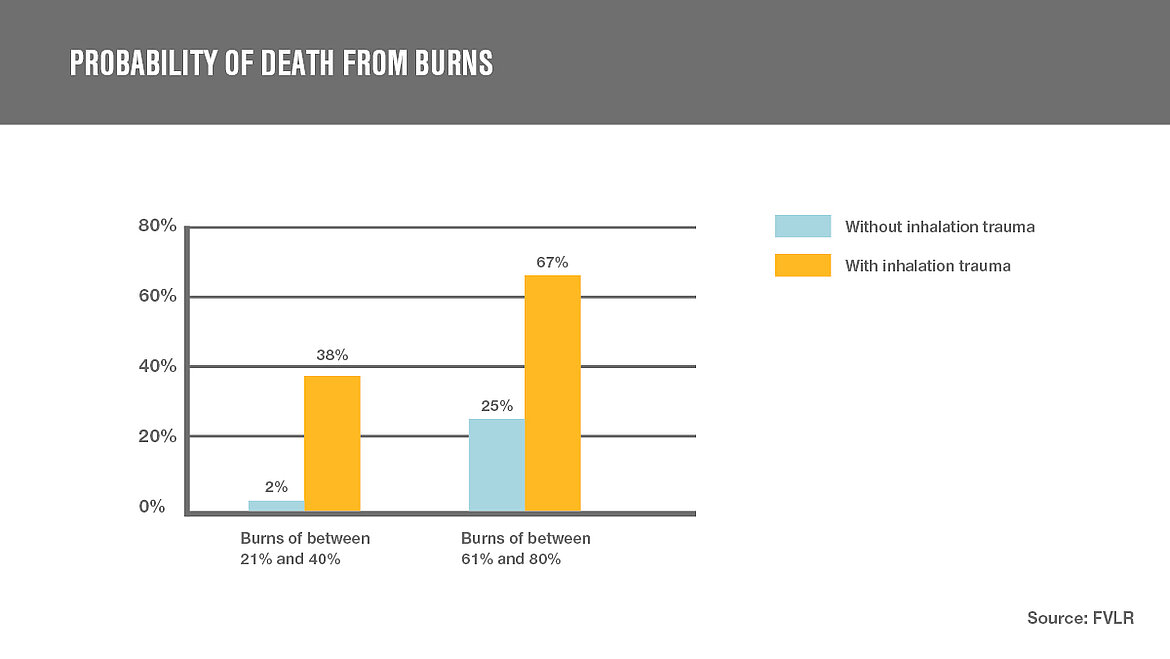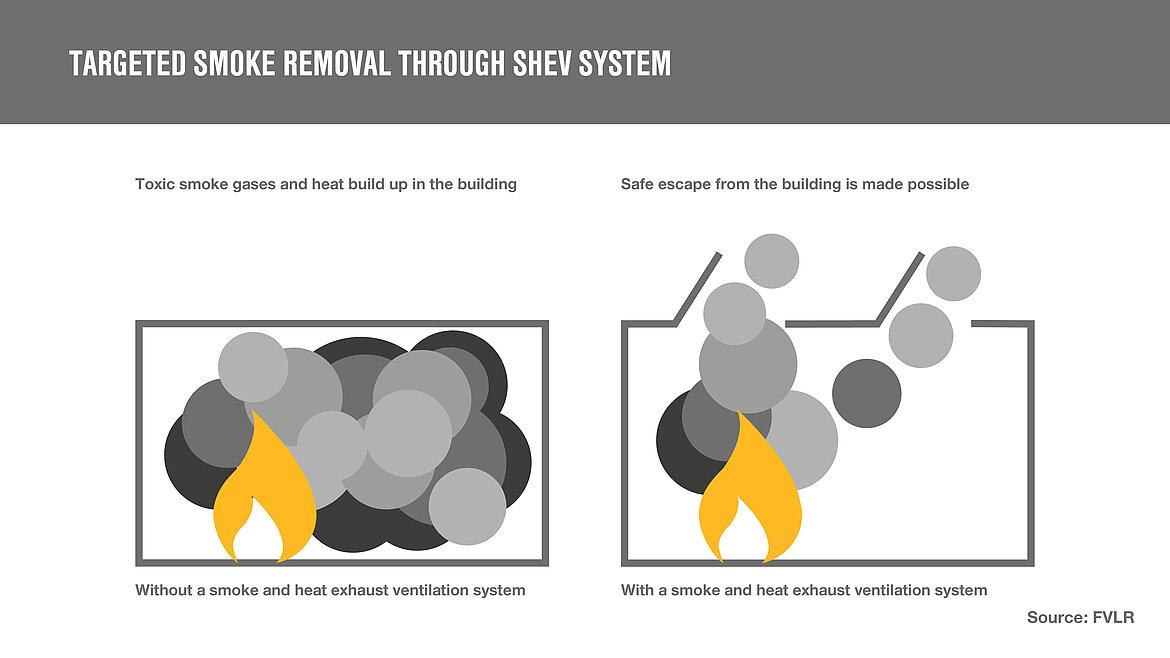Fire deaths are smoke deaths
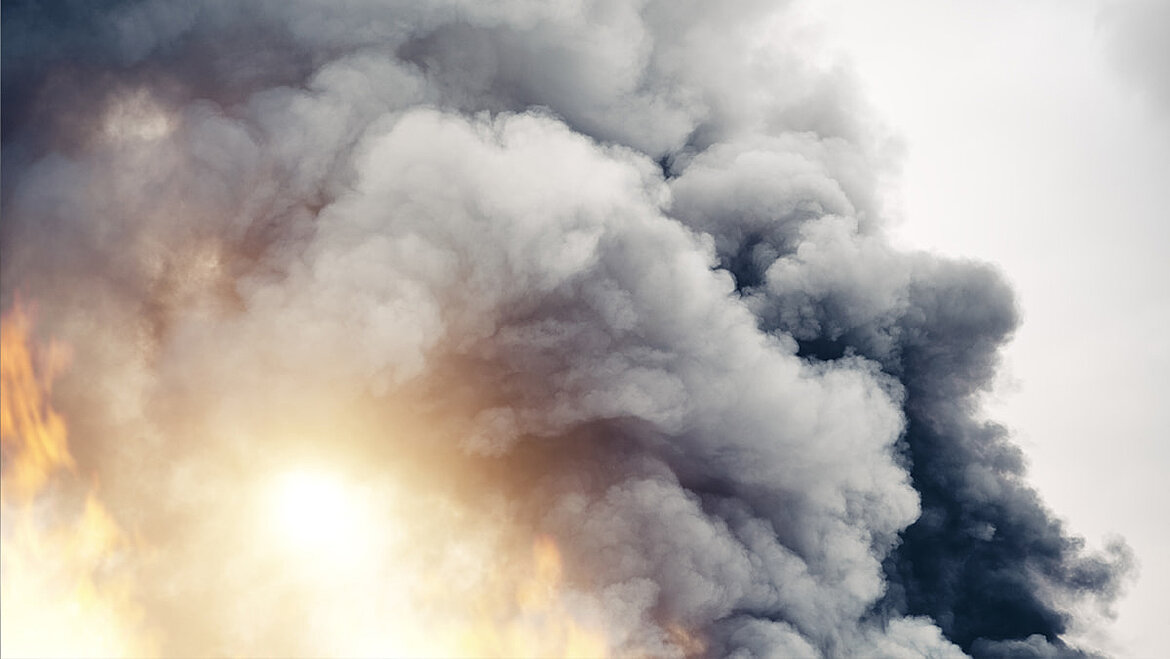
It is not the fire that is the biggest problem in a fire, but the smoke that is the No. 1 source of danger for the people in the building and for the fire brigade.
The consequences are dramatic: within just three minutes, visibility is reduced to such an extent by the smoke that people in the building lose their orientation and can no longer get to safety.
The situation is aggravated by the rapidly increasing concentration of the gas carbon monoxide (CO). This rises sharply during the fire and leads to headaches, increasing symptoms of poisoning and unconsciousness, and even death.
In America, there are about 2972 fire deaths every year. Fortunately, hardly any people have to experience a fire themselves in their lifetime. However, since most people have no experience with the situation of a fire, they usually make big mistakes in their first reaction. Instead of fear, most people associate curiosity with fire. Looking and wondering instead of running away and sounding the alarm is often the motto.
Ignorance of the fact that fire smoke spreads rapidly and blocks all escape, rescue and fire-fighting routes within seconds is life-threatening. This is because people's perception that they have enough time to escape in case of fire is deceptive - less than three minutes are left to escape. The reason for the short time window for a rescue is the toxic smoke and rapid spread of fire smoke in buildings.
Fire smoke and its dangers
The dangerous thing about fire smoke is the toxic gases that are produced during a fire. Depending on the cause of the fire, the objects and the environment in which it burns, the smoke contains toxic substances that enter the organism via the lungs and damage the lung surface. Examples of such toxic substances are carbon monoxide, hydrochloric acid or cyanide compounds, which can be produced, for example, by the fire of plastic veneers.
What the fire smoke is composed of depends entirely on what is burning. The spread of the fire also depends on the environment and any preventive protective measures taken.
How is fire smoke produced?
When materials burn, two things are produced: smoke and decomposition gases and heat. Smoke and decomposition gases are components of combustion that have not been converted into heat in this combustion process. Smoke is an aerosol produced by combustion processes in finely dispersed form from exhaust gases, dust particles such as soot, fly ash or unburnt material and mist droplets such as water, oil vapours and acid vapours.
The prerequisite for the combustion process to occur is a meeting of a combustible substance, heat and oxygen in the right proportions. How energetic the combustion process is depending on various factors:
- Amount of fire surface
- Thermal condition
- Oxygen content
- Ignition or ignition energy
The higher the energy of combustion, the lower the formation of smoke and decomposition gases.
Means: In case of optimal combustion, relatively little smoke is formed, but in case of non-optimal combustion or deteriorating combustion, the amount of smoke and decomposition gas increases considerably.
How does smoke spread?
In closed and unventilated rooms, the spread of smoke and fire gases is determined by the source of the fire. Since a fire always proceeds at higher temperatures than those of the surroundings, heat is released from the source of the fire into the surroundings. This generates an upward thermal current.
The smoke is then removed with the upward rising confection heat. This takes the form of an upward-opening funnel called a plume.
Above the source of the fire, smoke and heat rise upwards in the plume and collect under the storey ceiling. Without a smoke extraction system, the room air and with it the smoke circulates along the ceiling, down the walls and back to the source of the fire.
In the process, air and smoke form loops. In rooms without smoke extraction, this inevitably leads to recirculation into the floor area, which smokes the initially smoke-free occupied area within a few minutes.
What are the dangers of fire smoke?
Every fire burns in its own way and forms different fire smoke in terms of the amount of smoke and the composition. Depending on this, there are different hazards. In general, fire smoke can be divided into four different hazards.
Fire smoke as a visual obstruction
In a very short time, soot particles from fire smoke flow into rooms in a building, rapidly reducing the range of vision and preventing people from recognizing colours and contrasts, for example the colours of escape route signs. In addition, fire smoke strongly irritates the eyes, so that visual acuity decreases. Fire smoke as a visual obstruction is particularly dangerous because the existing or non-existing visibility strongly influences human behaviour.
- Visibility more than 20 metres: Well-being
- Visibility 10 to 15 metres: Uncertainty
- Visibility of less than 10 metres: panic
Fire smoke as a respiratory poison in buildings
Besides toxic substances such as hydrogen chloride, sulphur oxides or hydrogen cyanide, the most common respiratory poison in fires is carbon monoxide (CO). This respiratory poison is colourless, odourless and tasteless and is responsible for most deaths in fires. Respiratory poisons differ in their effects. They are differentiated between the effect on blood, nerves and cells, the irritant and corrosive effect or the asphyxiating effect.
Fire smoke as a flammable or explosive by-product.
Fire smoke contains thermal decomposition products that can ignite at temperatures above 400 °C. Depending on the concentration and the mixture of pollutants, this combustion proceeds as a sudden explosion with a considerable pressure wave. Depending on the concentration and the mixture of pollutants, this combustion proceeds as a sudden explosion with a considerable pressure wave. In technical circles, this is called the dangerous "flash over".
Fire smoke as environmental pollution and building hazard
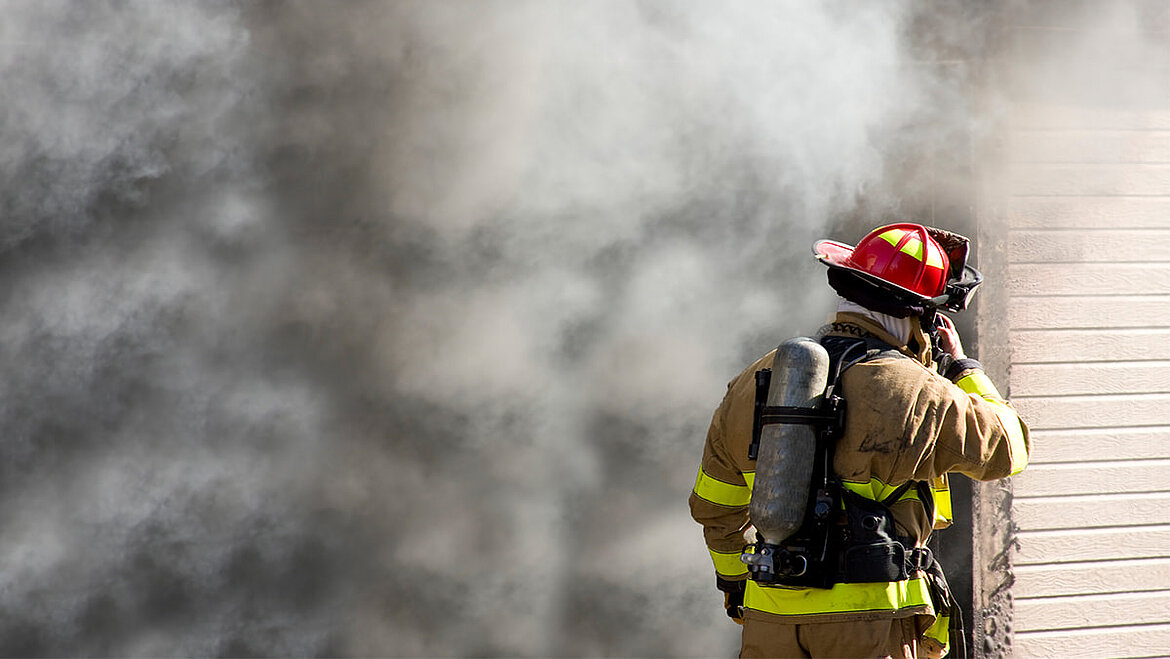
Depending on the course of the fire and the mixture of pollutants, aggressive gases or liquids are formed. These can damage people, the building structure or even the environment over a large area around the fire site. An example of this is the polluted or even toxic extinguishing water that flows unhindered into public waters and can thus cause great damage.
The toxic or corrosive substances also pose a great hazard and hindrance to the fire brigade. Thus, measuring pollutants during a fire has become an additional task for the fire brigades.
The fire brigade needs clear, evaluated information on possible fire products and their decomposition for the measurement of pollutants during the operation. There are various measuring methods for measuring the concentrations of fire gases, such as measuring tubes, electromechanical sensors, explosimeters or gas measuring devices. However, the often lacking selectivity complicates the significance of the results and makes it all the more difficult for the fire brigade to measure the pollutants.
The serious consequences of fire smoke
In addition to damage to the environment, property and buildings, personal injury is the most serious consequence of a fire. In most cases, fire deaths are smoke deaths.
This is because patients admitted with burn injuries usually do not die because of the burnt body surface, but as a result of lung complications.This is called inhalation trauma.
Injured persons with such a trauma have inhaled toxic substances. As a result, lung changes develop acutely or only after three to five days, which make oxygen intake and exchange massively difficult or impossible.
In the case of such smoke injuries, the patients have miserable chances of survival.
To illustrate the whole thing, here is a brief example: In the case of body surface burns of 21 to 40 per cent, only two per cent of patients die. If they have also suffered inhalation trauma, this rate rises rapidly to 38 percent.
Even in the case of severe burns of 61 to 80 percent, three quarters of the injured still survive if there is no lung injury, but only one third if the inhalation trauma is added.
Protective measures that save lives
Time is the decisive factor in case of fire. How long do people need to leave rooms or buildings? How quickly can people remaining in the rooms be found and rescued? How long does it take the fire brigade to locate the source of the fire and fight it in a targeted manner? The answer to all three questions depends crucially on two criteria: How much smoke is formed, how quickly, and how effectively is the toxic and visibility-robbing smoke dissipated? The better the smoke is removed to the outside and replaced by fresh air, the more time there is for all necessary measures.
Smoke detector for early detection
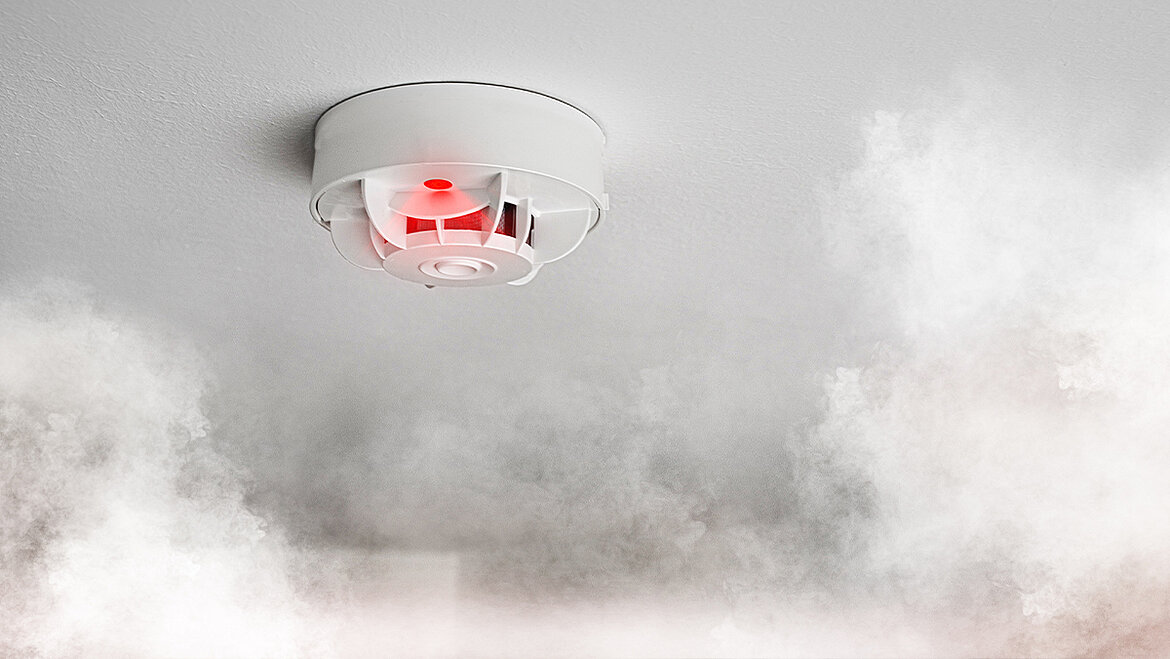
The first thing is to detect smoke as early as possible. In private households, larger facilities or office buildings, smoke detectors are a possible solution for this.
Automatic smoke detectors also detect smoke in situations where it is not possible for people to detect the No. 1 source of danger, smoke, themselves, for example at night while sleeping.
In Germany, smoke detectors are compulsory for private homes in all 16 federal states. The details on dates and deadlines as well as on smoke detector installation and maintenance are regulated by the building regulations of the respective federal states.
SHEVS save lives - saving time with a low-smoke layer
Even in 20-metre high and 40-metre long industrial halls, people only have a few minutes to escape in the event of a fire. The hope remains that the respective operators of the buildings have provided preventive fire protection, i.e. good smoke extraction systems and easy-to-find, short escape routes. Smoke and heat ventilation systems (SHEVS) are an indispensable part of a responsible fire protection strategy, although not mandatory for all buildings. The specifications for smoke ventilation devices are not uniform throughout Germany. The federal states prescribe in the respective state building codes and associated special building codes and administrative regulations in which cases smoke vents are required.
Smoke and heat extraction systems that are installed in the roof or near the ceiling can discharge the gases to the outside in a targeted manner, so that a sufficiently high low-smoke layer forms above the floor in which escapees and rescue forces can orientate themselves and move around.
The low-smoke layer enables people in the burning building to assess the dangerous situation better and with less stress, to make life-saving decisions correctly and to use the recognizable escape options quickly, sensibly and variably.
Low-smoke layers make it easier for rescuers to find and rescue injured persons and for fire-fighting forces to locate the source of the fire without impairments and to fight it effectively. With the appropriate verification procedure, e.g. according to DIN 18 232-2, the number and size of SHEVS required for a stable low-smoke layer can be determined depending on the room geometry and fire spread.


